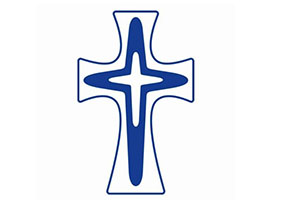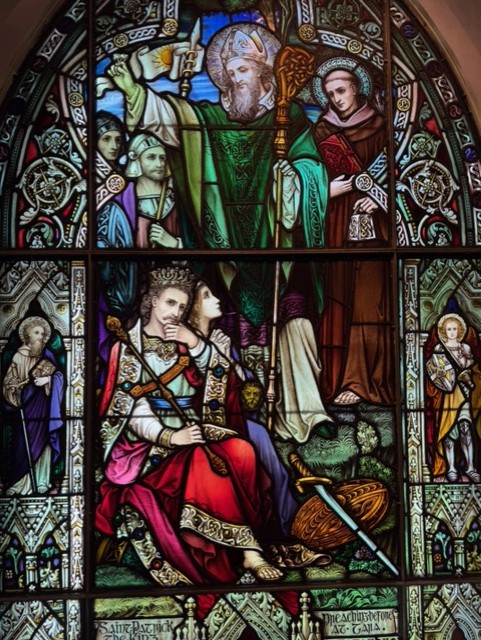Esther Mary Joseph Coady, daughter of Mary and John Coady was born in St. John’s in 1835. Our records do not have any information about her before she entered religious life and very little after.
 She entered the Sisters of Mercy on August 15, 1858, and at her reception into the novitiate she received the name Sister Mary Gonzaga. She was professed in January of 1861 and in September of that same year, she was named as a member of the founding community of St. Joseph’s Convent, Brigus.
She entered the Sisters of Mercy on August 15, 1858, and at her reception into the novitiate she received the name Sister Mary Gonzaga. She was professed in January of 1861 and in September of that same year, she was named as a member of the founding community of St. Joseph’s Convent, Brigus.
The Catholic population of Brigus had prepared well for the coming of the sisters. They had collected nearly 900 pounds for the construction of the convent. On their arrival at the wharf in Brigus on that September day, the sisters were given a warm and enthusiastic welcome with loud cheering and cannon shots. The excited crowd then led the sisters in procession to their new home.
There had been a Catholic school in Brigus since 1805, operating first out of the home of the teacher, Mr. Robin Power and then in the sacristy of the church. For the first few years after their arrival the sisters taught both boys and girls, but in 1870 a male teacher took over education of the boys. The sisters’ school soon gained a reputation for its high academic record as well as for its excellence in music and drama. The sisters in Brigus also offered a training program for prospective teachers, as noted in the report of the Superintendent of Education in 1902:
“The convent supplies nearly all the teachers employed by the Brigus Board and the excellent training these have received is very evident in the way they conduct their schools.”
Sister M. Gonzaga lived and taught in Brigus for her entire religious life. She died on January 18, 1913, and is buried in the sisters’ cemetery in Brigus.
Esther Mary Joseph Coady, hija de Mary y John Coady, nació en St. John’s en 1835. Nuestros registros no contienen ninguna información sobre ella antes de que ingresara en la vida religiosa y muy poca después.
Ingresó en las Hermanas de la Misericordia el 15 de agosto de 1858 y, al ser admitida en el noviciado, recibió el nombre de sor Mary Gonzaga. Profesó en enero de 1861 y, en septiembre de ese mismo año, fue nombrada miembro de la comunidad fundadora del convento de San José, en Brigus.
La población católica de Brigus se había preparado bien para la llegada de las hermanas. Habían recaudado casi 900 libras para la construcción del convento. A su llegada al muelle de Brigus aquel día de septiembre, las hermanas recibieron una cálida y entusiasta bienvenida con vítores y salvas de cañón. La emocionada multitud acompañó a las hermanas en procesión hasta su nuevo hogar.
Desde 1805 había una escuela católica en Brigus, que primero funcionó en la casa del maestro, el Sr. Robin Power, y luego en la sacristía de la iglesia. Durante los primeros años tras su llegada, las hermanas enseñaban tanto a niños como a niñas, pero en 1870 un maestro se hizo cargo de la educación de los niños. La escuela de las hermanas pronto se ganó una reputación por su alto nivel académico, así como por su excelencia en música y teatro. Las hermanas de Brigus también ofrecían un programa de formación para futuros profesores, como se señala en el informe del Superintendente de Educación de 1902:
«El convento proporciona casi todos los profesores empleados por la Junta de Brigus y la excelente formación que estos han recibido es muy evidente en la forma en que dirigen sus escuelas».
La hermana M. Gonzaga vivió y enseñó en Brigus durante toda su vida religiosa. Murió el 18 de enero de 1913 y está enterrada en el cementerio de las hermanas en Brigus.


 The convent had a large chapel in which the chief adornment was a stained- glass window depicting the patron saints of the sisters of the founding community – Saints Winefride, Michael, Paul and Rita. Father O’Brien had designed the window himself and had sent the plan to Dublin to a company that specialized in making stained-glass windows.
The convent had a large chapel in which the chief adornment was a stained- glass window depicting the patron saints of the sisters of the founding community – Saints Winefride, Michael, Paul and Rita. Father O’Brien had designed the window himself and had sent the plan to Dublin to a company that specialized in making stained-glass windows. She requested entrance to the Sisters of Mercy in 1911 and made first profession in 1914.After her profession she was assigned to Immaculate Conception Convent in Conception Harbour, where she spent the entirety of her religious life. According to Sister Kathrine, Sister M. Rosarii was one of the “hidden“ Sisters of Mercy who spent her days looking after the kitchen and the day-to-day running of the convent.
She requested entrance to the Sisters of Mercy in 1911 and made first profession in 1914.After her profession she was assigned to Immaculate Conception Convent in Conception Harbour, where she spent the entirety of her religious life. According to Sister Kathrine, Sister M. Rosarii was one of the “hidden“ Sisters of Mercy who spent her days looking after the kitchen and the day-to-day running of the convent.